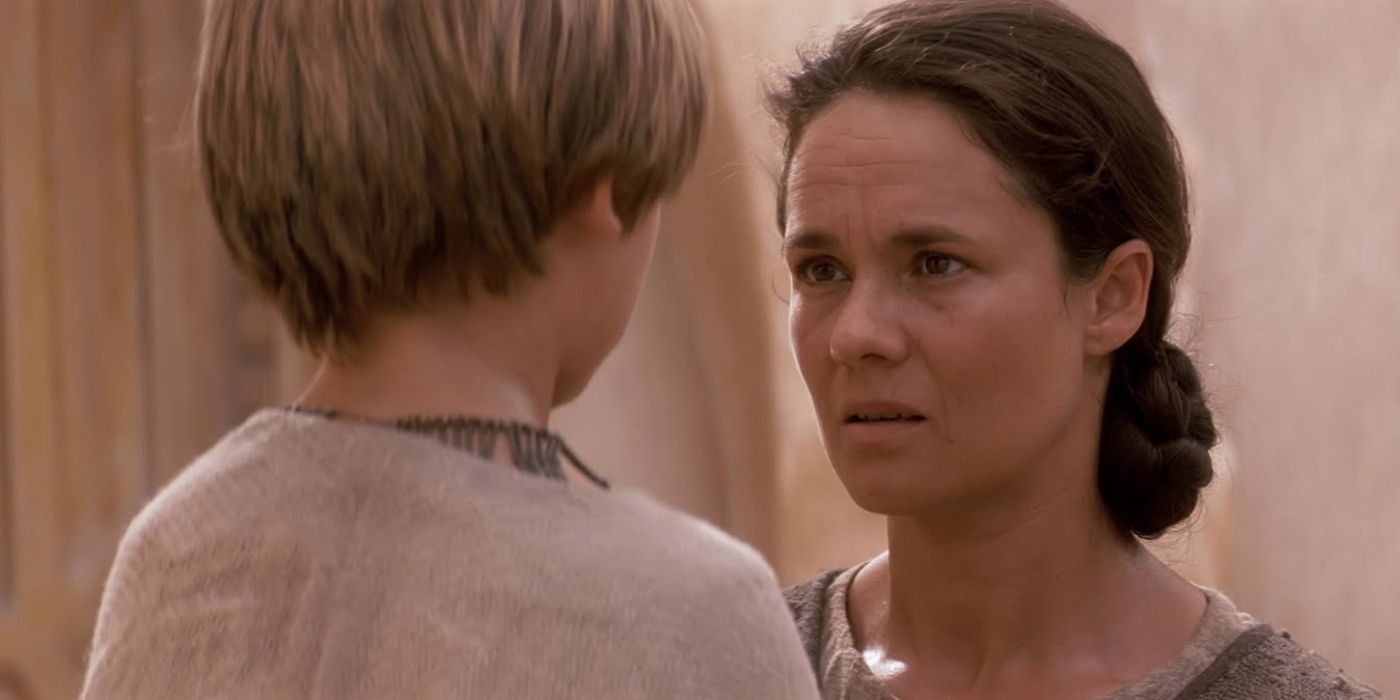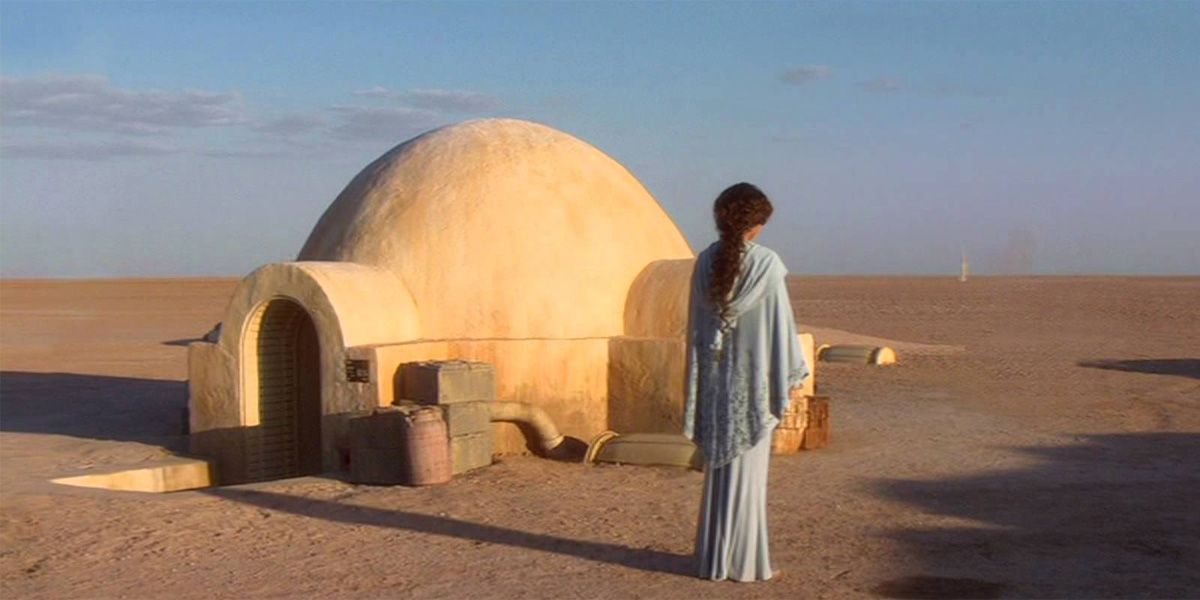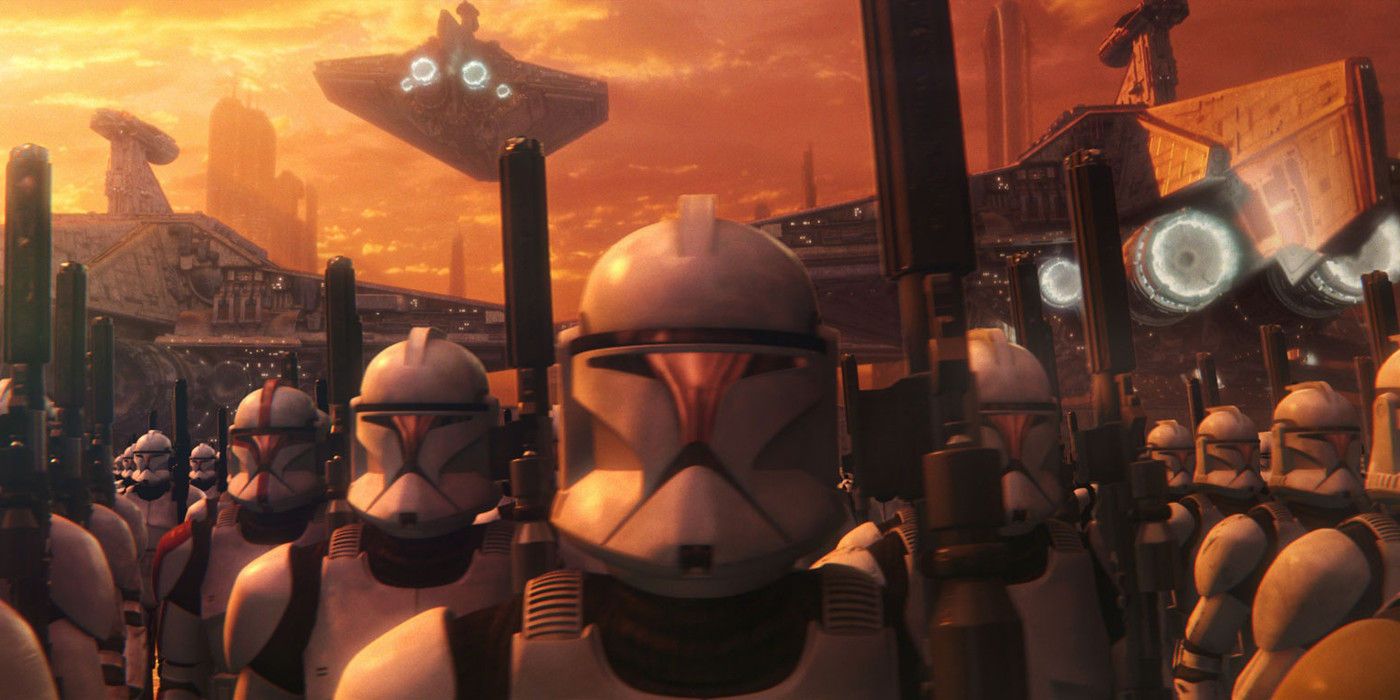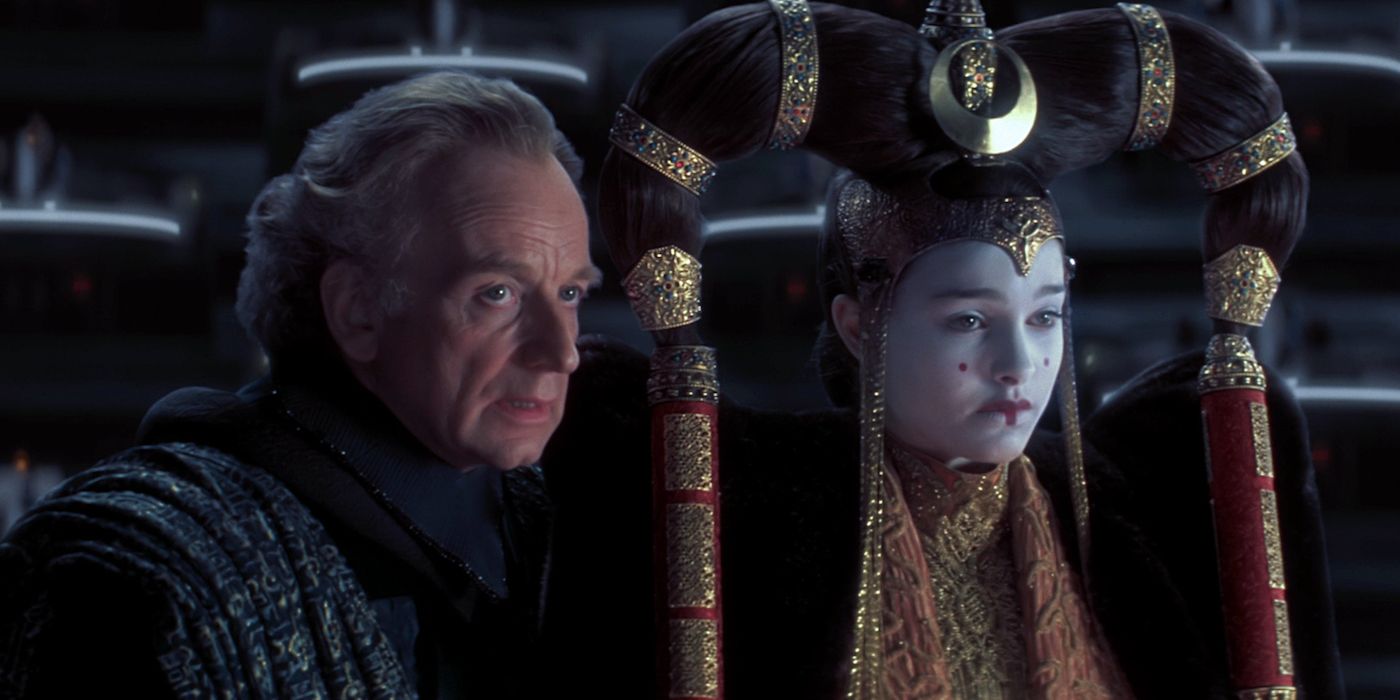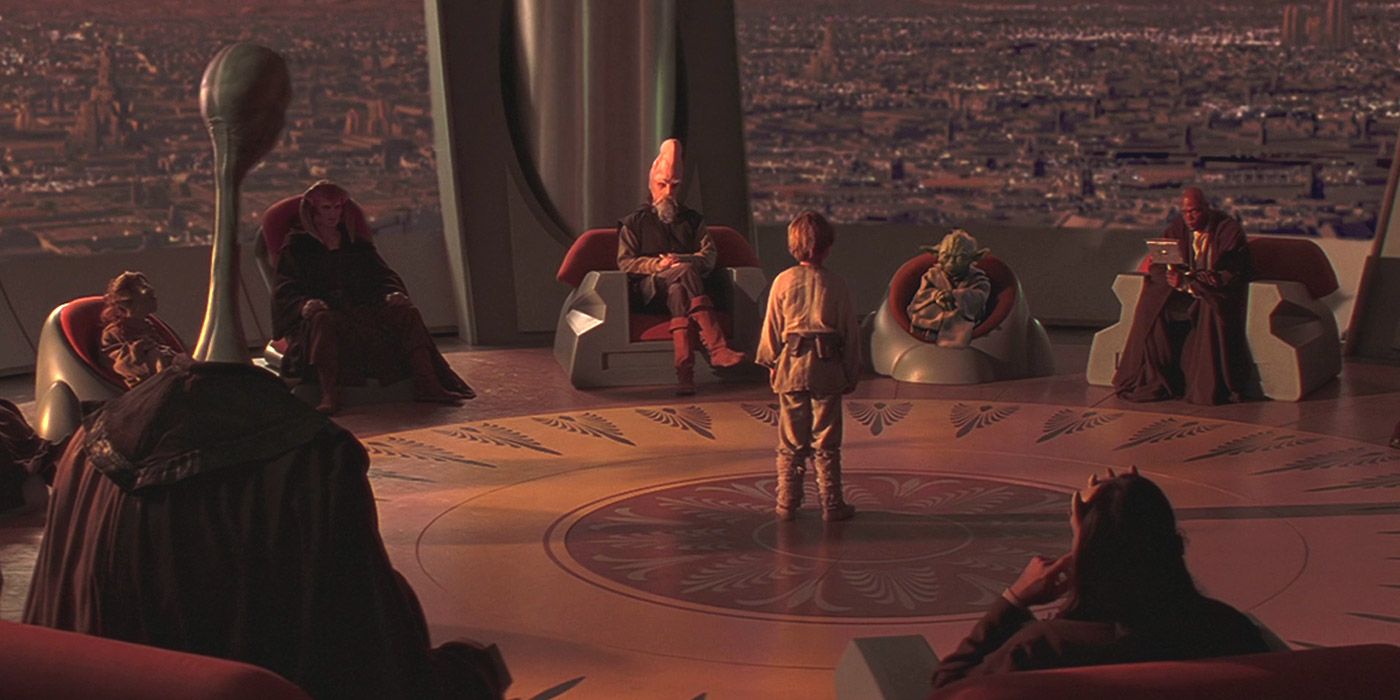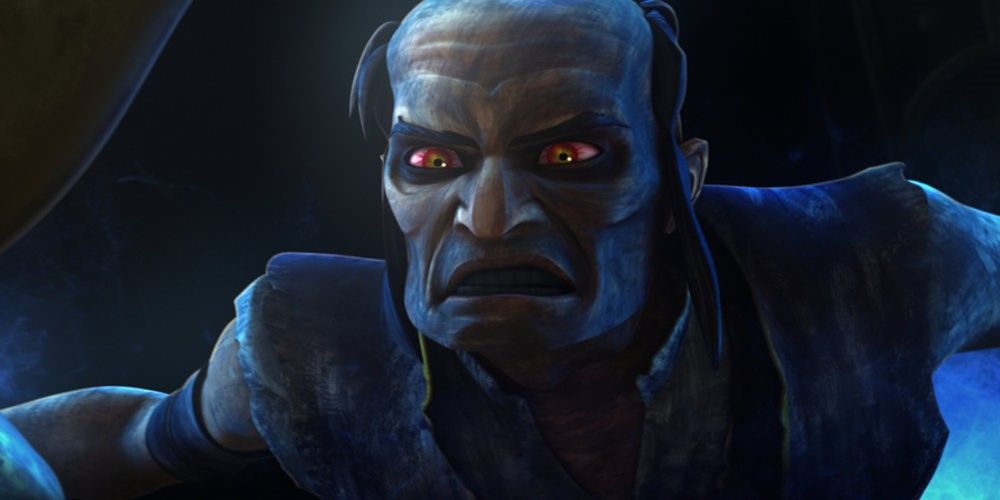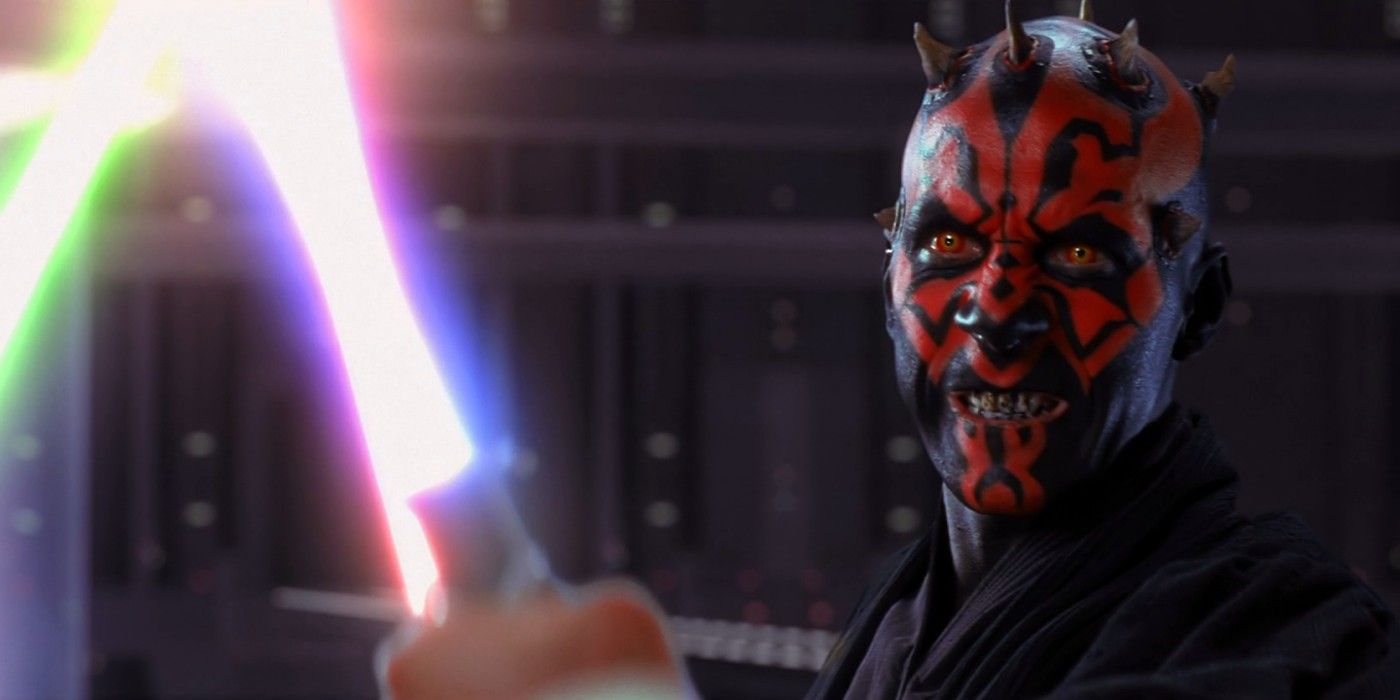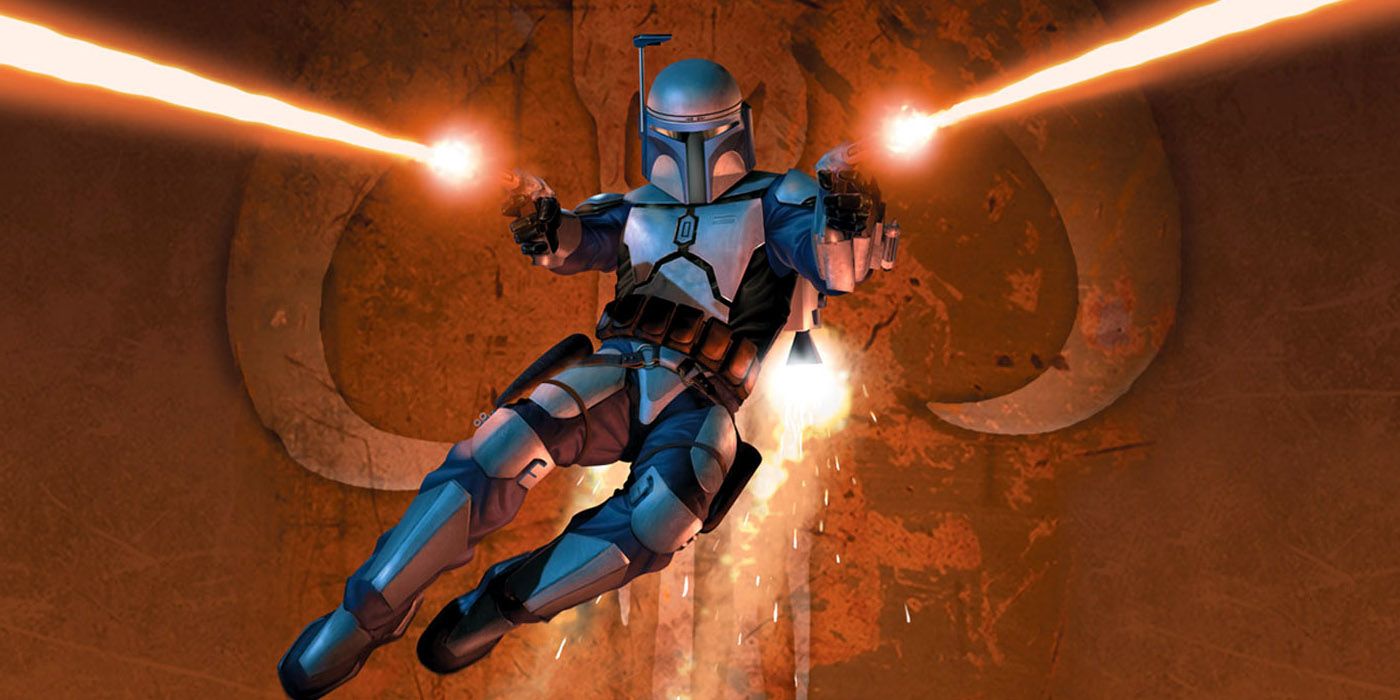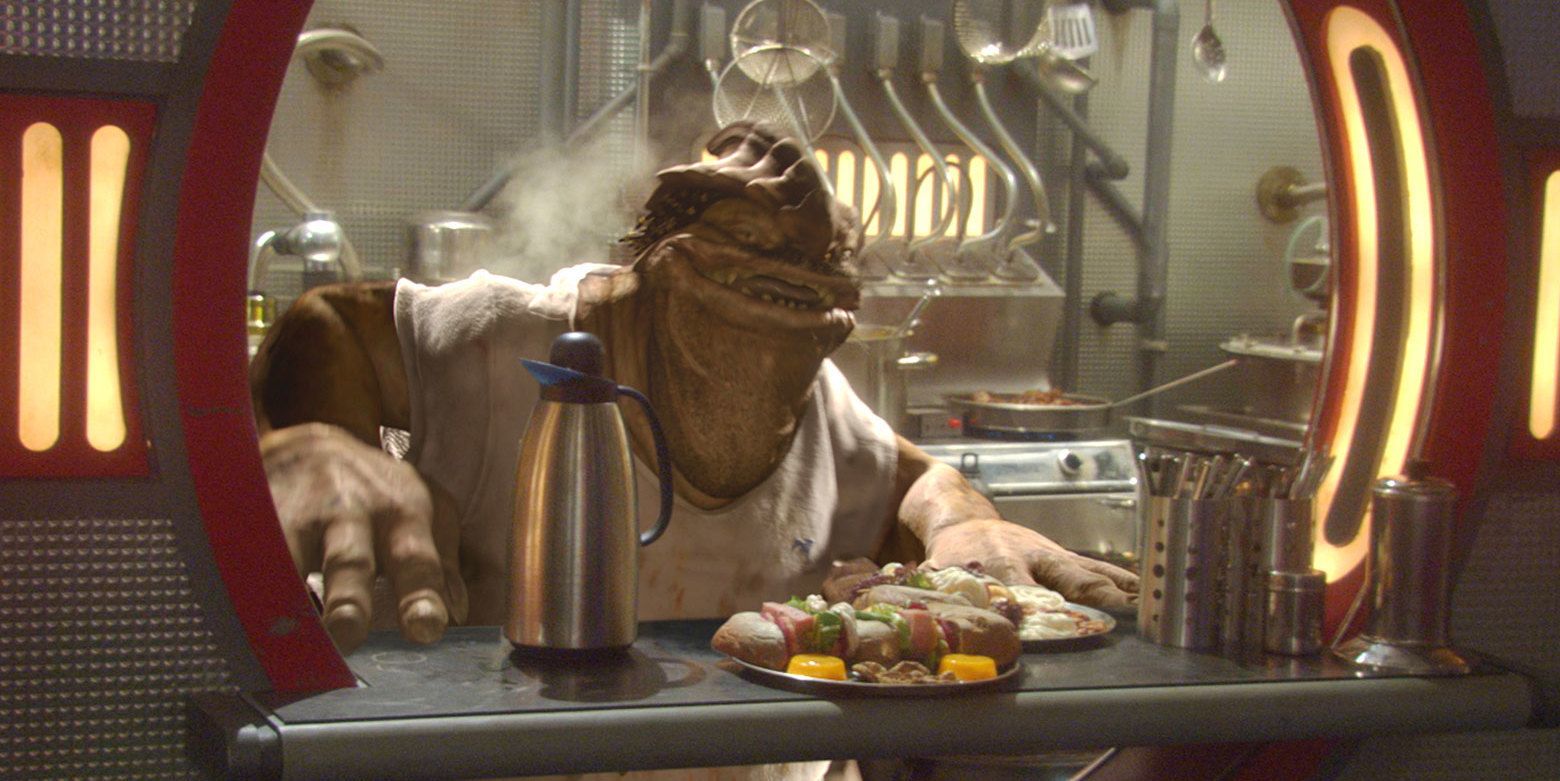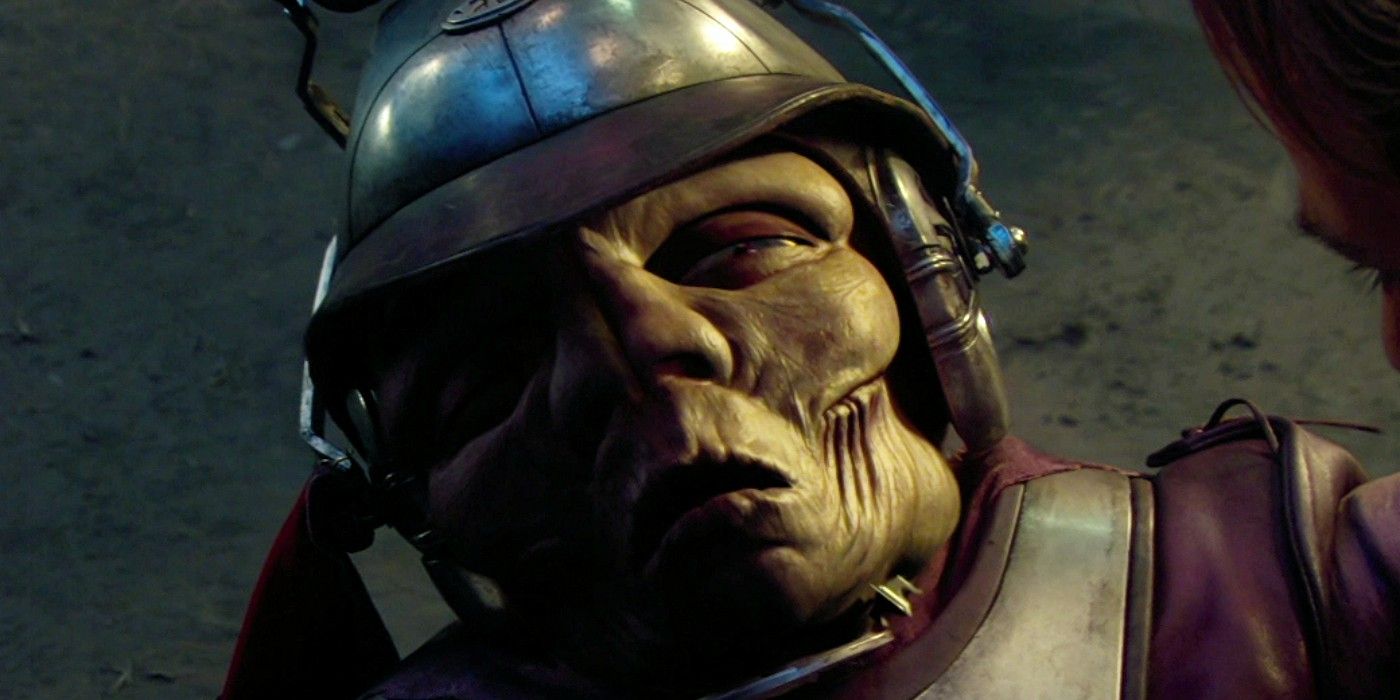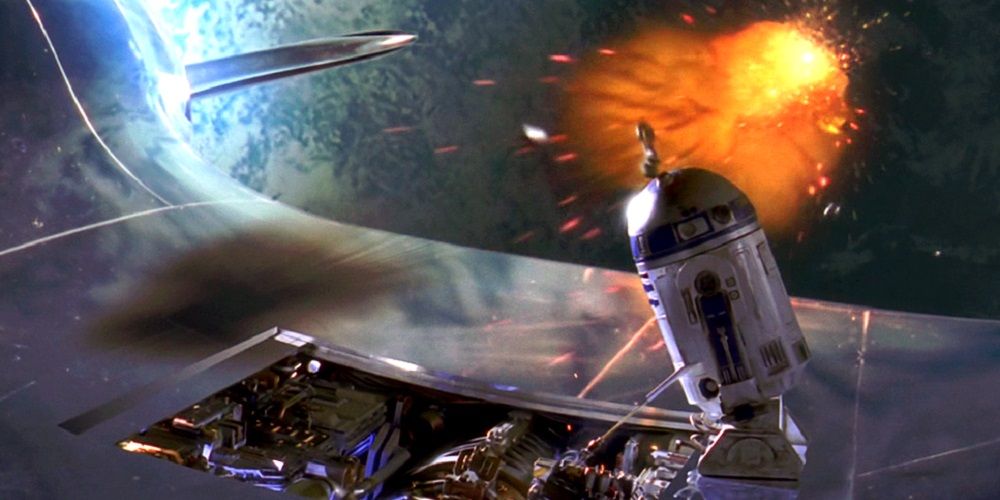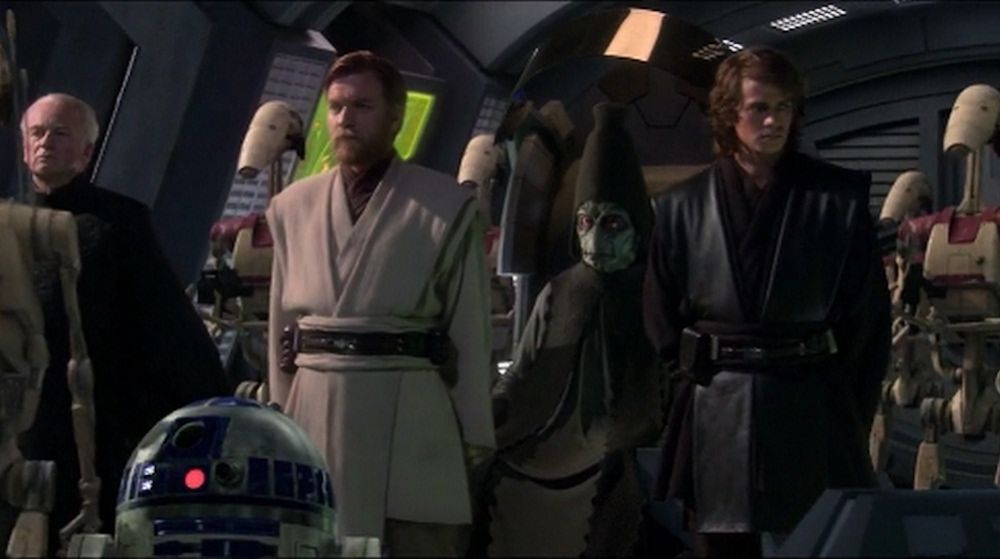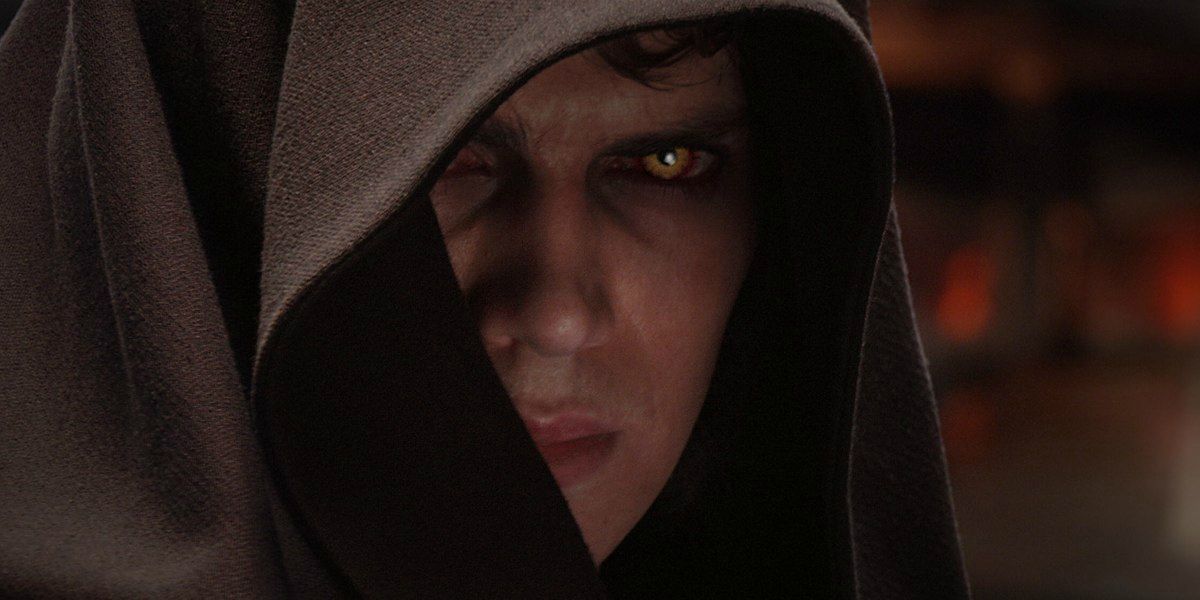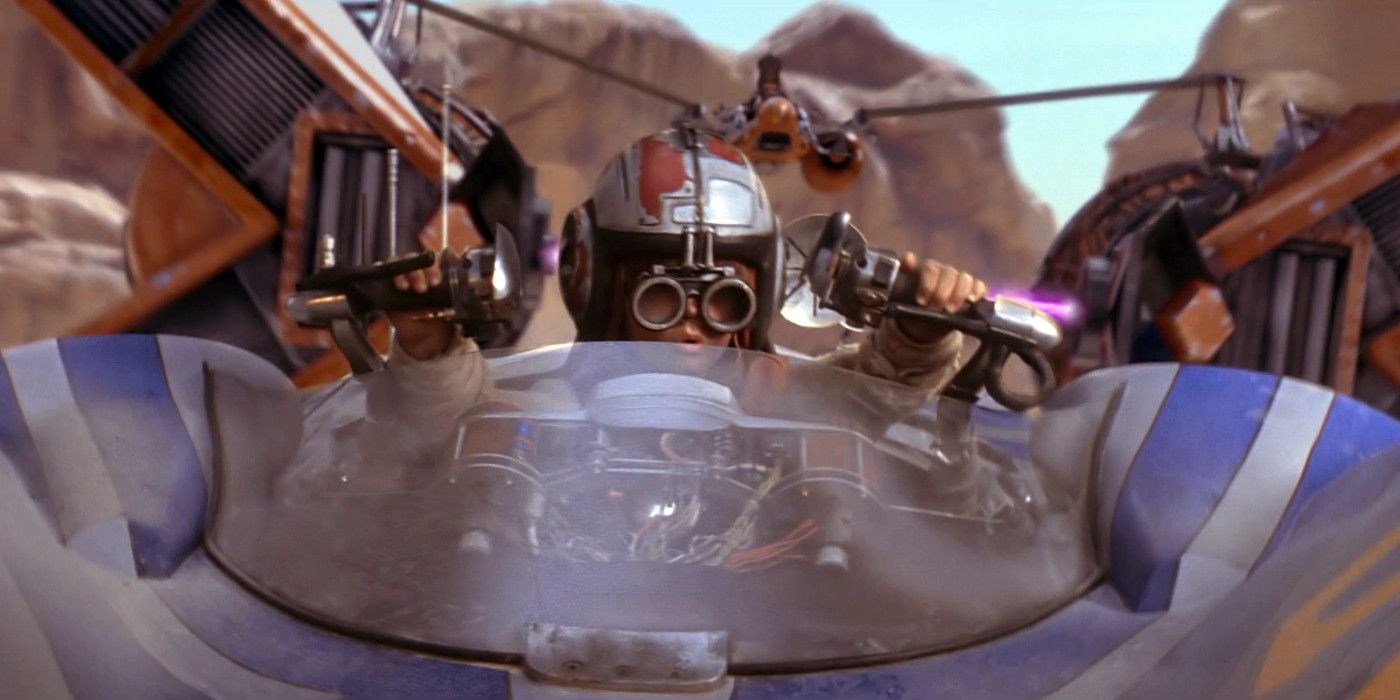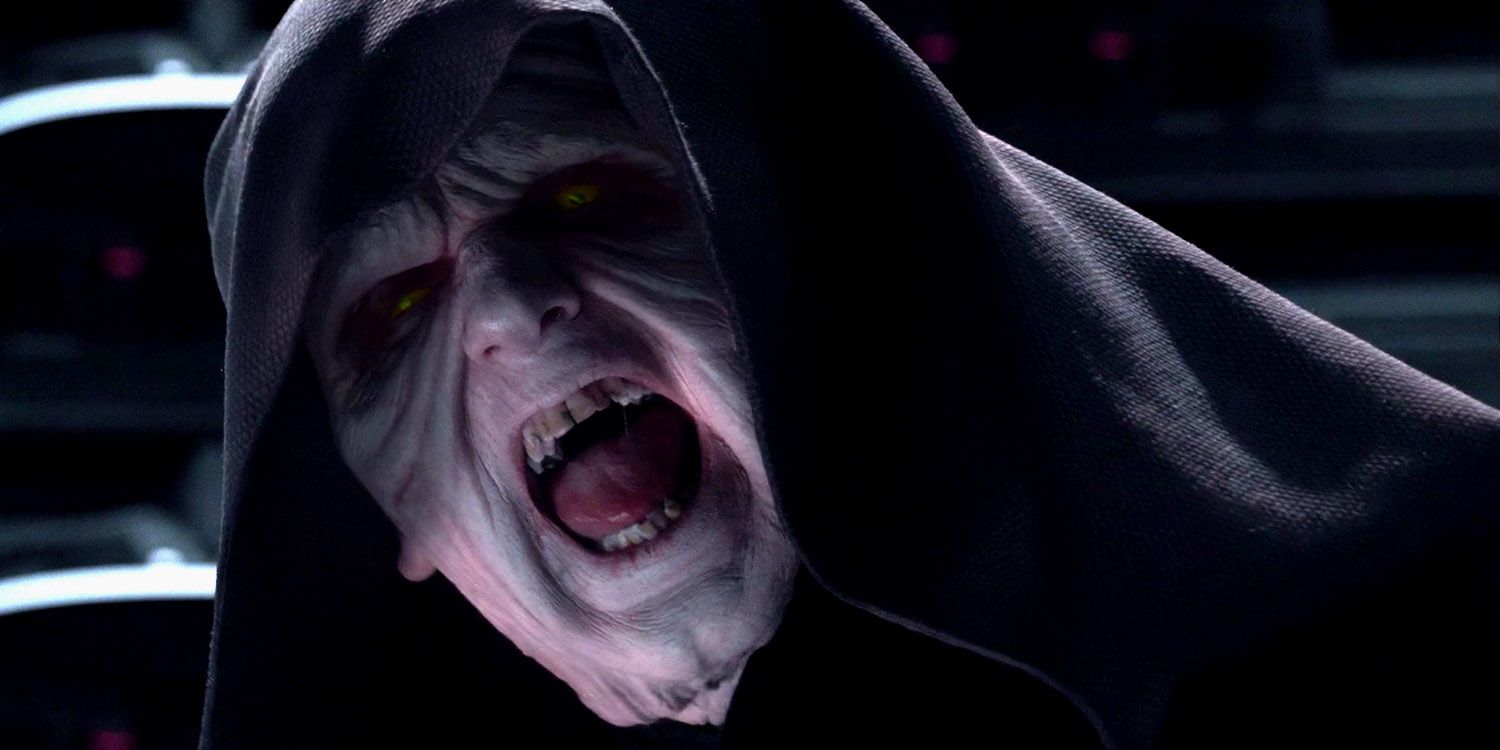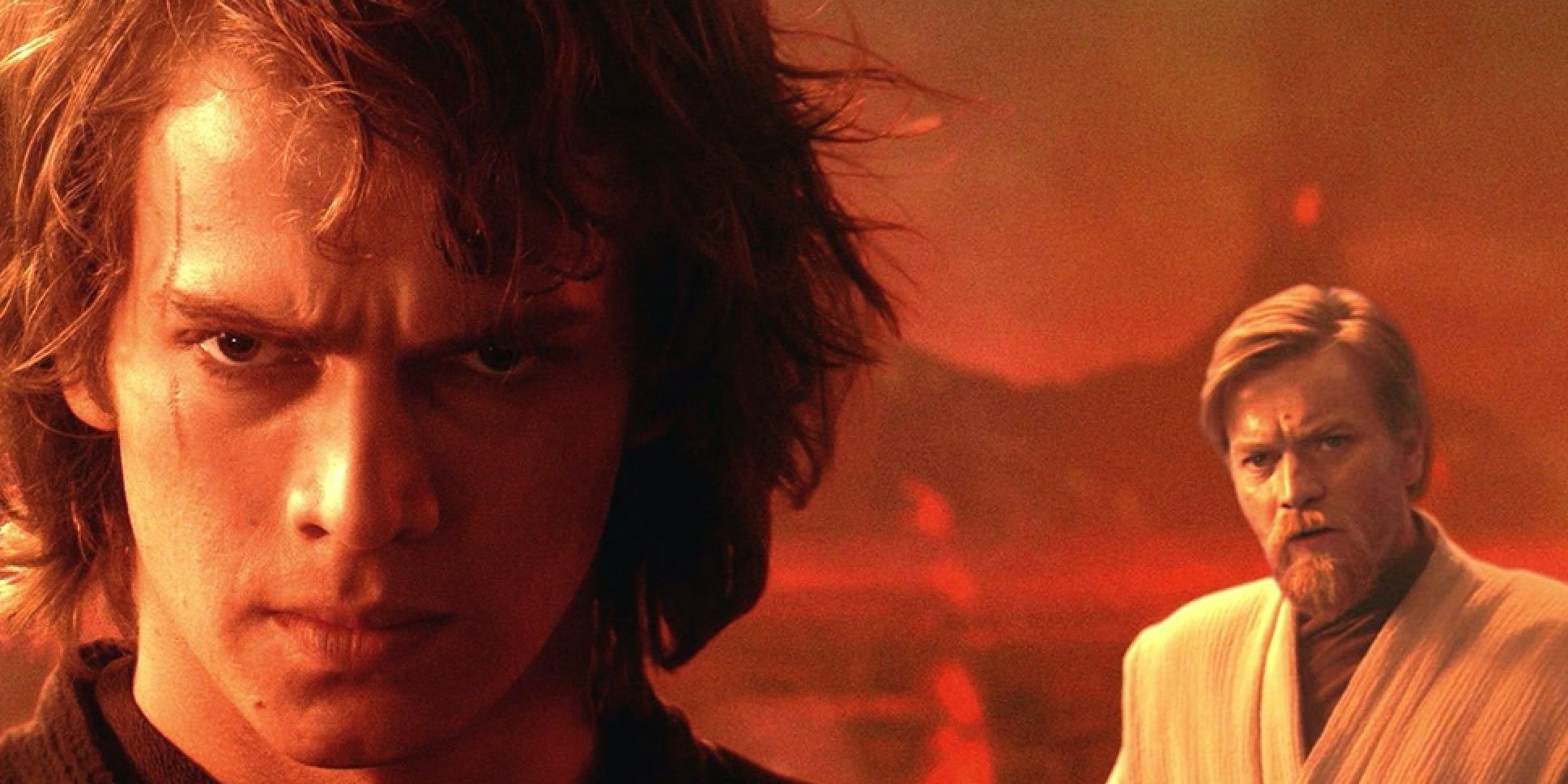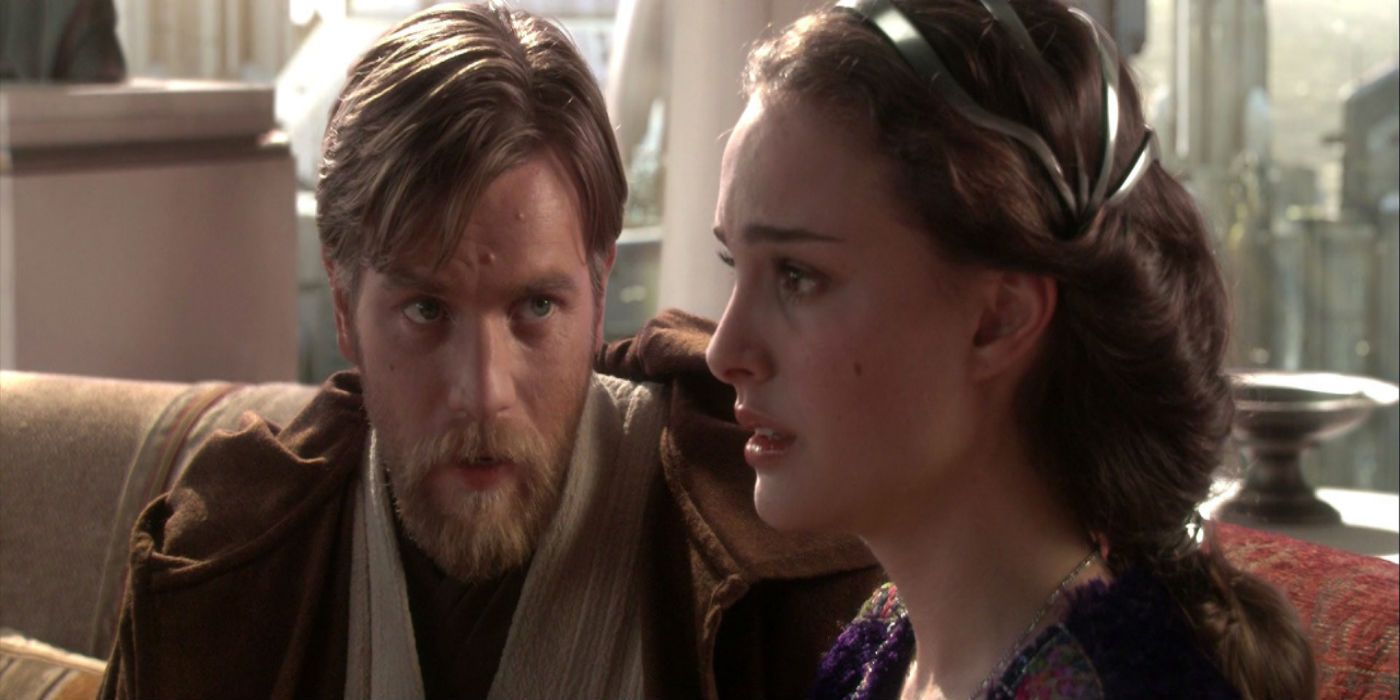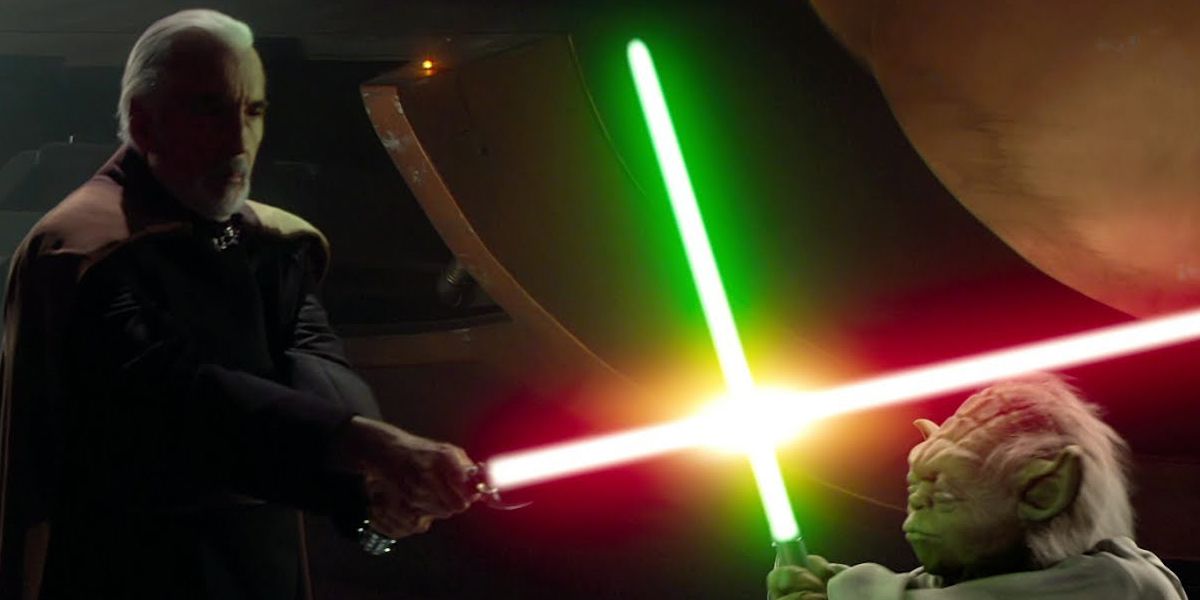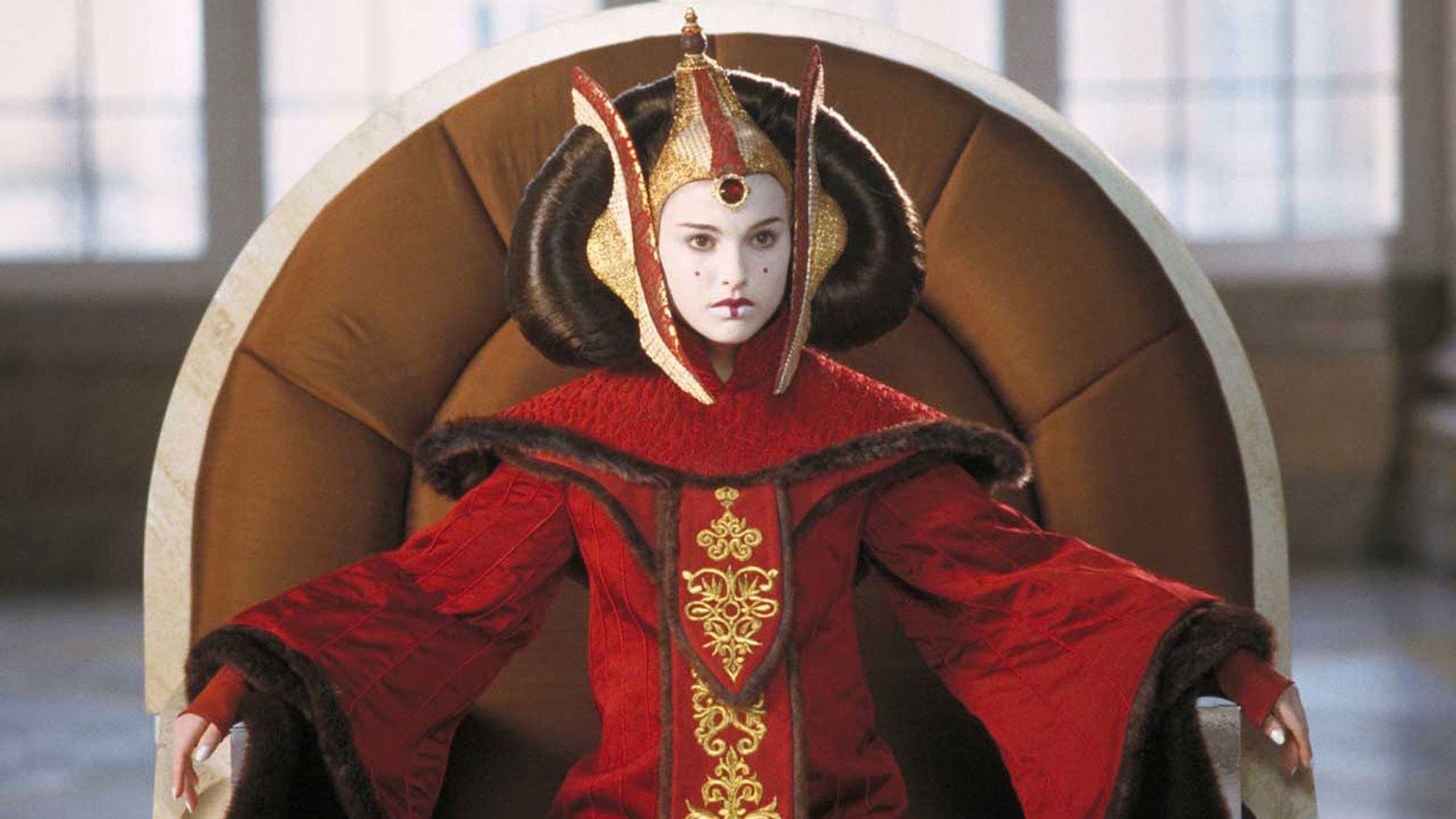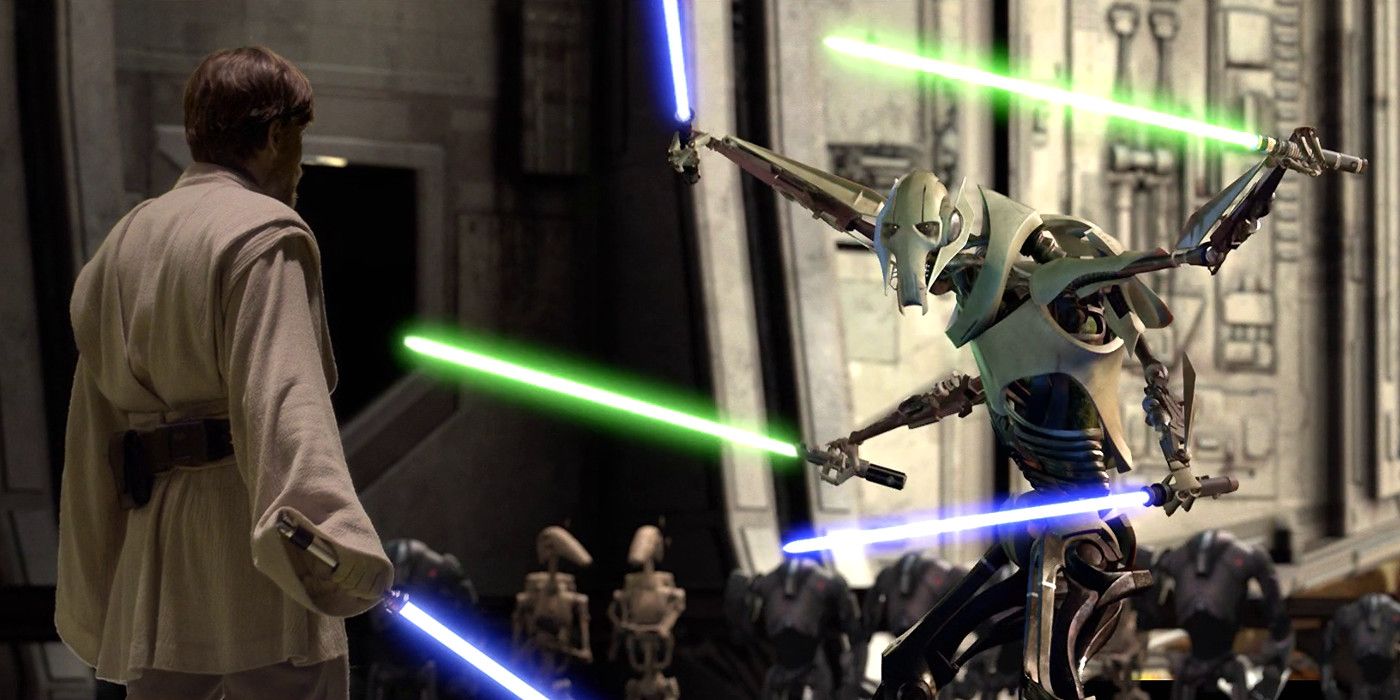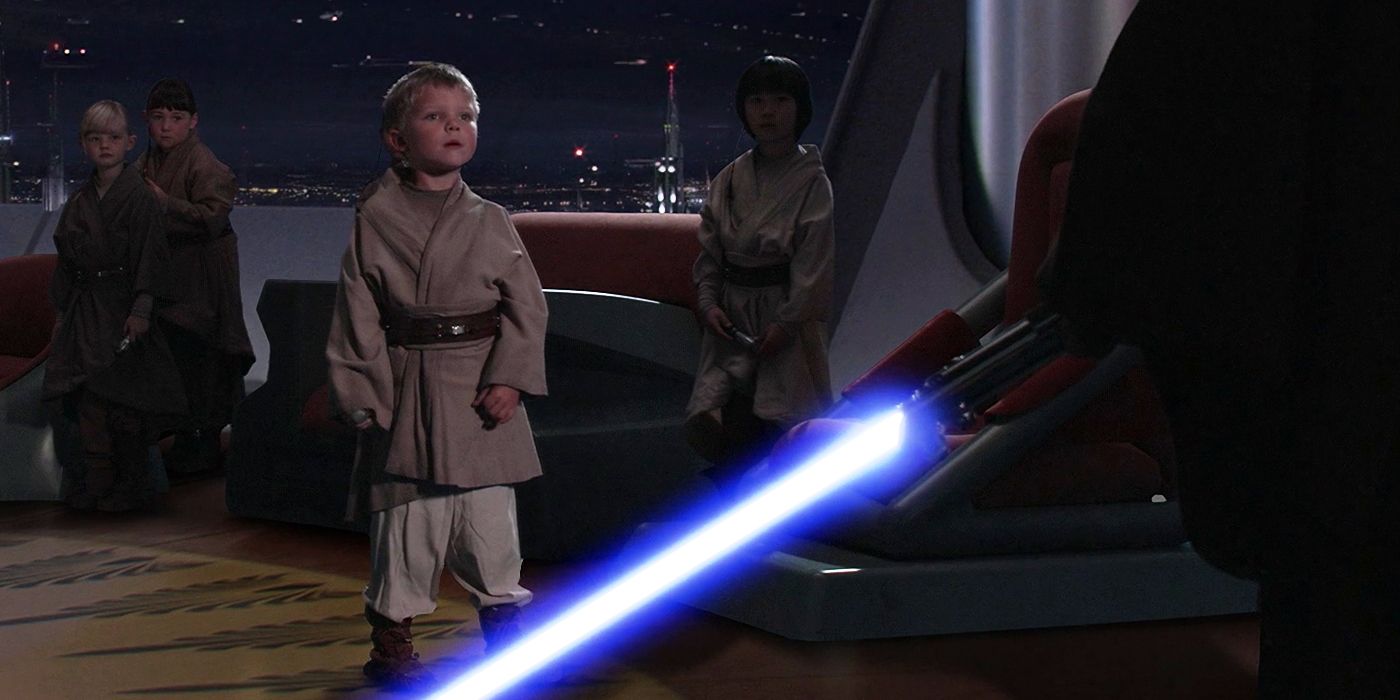We almost have four movies between us and the last batch of Star Wars movies, which ended with Revenge of the Sith in 2005. We've had the last decade-plus to consider and analyze George Lucas' final contributions to his space-adventure series, which has led us to one conclusion: big chunks of the movies just don't make sense.
We're willing to ignore the usual issues, like the existence of loud, fiery explosions in space. Also, nobody has been able to convince us of a plausible reason for lightsaber blades to just stop like that. We'll let those slide, though. If we wanted to get that granular, we'd never enjoy anything again.
However, even within the canon of Star Wars itself and when we ignore all of the weird stuff that just comes with the series, the trilogies are weird. That's not necessarily a statement about their quality, however-- plenty of people have and will continue to weigh in on that.
We're talking about moments that took us out of the movie, changed up series continuity, or were just straight-up baffling on their own. Somehow, we managed to stop here, but we could have kept going, believe us.
Here are the 25 Things That Make No Sense About The Star Wars Prequel Trilogy.
Single-ecosystem planets
This is a thing that comes up throughout Star Wars, but the prequels make a ridiculous contribution to the trend.
The galaxy far, far away hosts countless inhabitable worlds. Unlike Earth, which contains jungles and deserts and snowy bits all on the same orb, these planets just pick one biome and stick with it. That’s how we get “the ice world of Hoth” and “the forest moon of Endor” in the original trilogy.
Tatooine is just one huge desert, of course. As far as we can tell, Dagobah is just swamp all over.
These do make appearances in the prequels (the latter in a deleted scene that shows Yoda arriving to his exile), but one other planet takes this idea to outright silly places.
That planet, of course, is the Republic capital of Coruscant, the entire surface of which is a single, enormous city. It didn’t originate in the prequels, to be fair. It originated in the 1991 Legends novel Heir to the Empire. Lucas liked it so much that he incorporated it into the canon when he went back to make the other episodes.
However, considering his love of planets that are one thing and one thing only, we can see why he thought that this was a good add.
Trooper armor not stopping anything
Here’s another thing that’s been a problem throughout the series, but it bears repeating here. We’re not sure what Storm or Clone Trooper armor is good for other than creating a horde of identical enemies that it’s alright for our heroes to destroy en masse. However, it’s definitely no good against blasters.
We suppose it’s possible that the Trade Federation — and later the Rebel Alliance and Resistance — found a way to make their weapons effective against their opponents. However, if that were the case, we’d expect the designers to update their stuff.
The First Order has weapons that can stand up to a lightsaber, after all, and the only Jedi they know is drinking green milk fresh from the tap on Porg Island.
Apparently, the focus when they were designing the armor was mostly on creating untold legions of sparkling, white, skeleton troops, and they didn’t get much beyond aesthetics. A single shot anywhere will be the end of whoever is wearing the stuff.
Maybe the Republic and Imperial armies are so massive that it’s cost-prohibitive to keep updating the things. However, we also know that the Empire had basically all of the money in the galaxy, so we’re pretty sure they could afford some better armor.
The duly elected queen?
We have a lot of questions about Queen Amidala, and others will come up. However, while we’re here, she makes several references to her people “electing” her as their Queen, but that’s kind of the opposite of how monarchies work.
It’s possible that she’s a queen because her future daughter will be a princess, which is as good of an explanation as any and makes sense by George Lucas logic. That’s the same thought process that says that Anakin built C-3PO and Obi-Wan doesn’t recognize either him nor R2-D2 in A New Hope.
Obviously it’s getting a bit fiddly to question the political structures of fictional governments-- especially in a universe in which certain members of the population are samurai wizards. However, words still mean things, and a queen is not an elected leader, so why bother calling her that?
This is far from the biggest question we have about Padmé, and we’ll get to the others. However, they keep mentioning the whole “elected queen” thing throughout The Phantom Menace.
Maybe Lucas assumed that if enough people brought it up, the audience would just accept it as the way things are. However, it didn’t work, and it still doesn’t make sense.
What is the prophecy, anyway?
Almost the entire narrative thrust of the prequels comes down to a simple idea. Enough important Jedi believe that Anakin is a figure from one of their key prophecies that they decide to break protocol and train him... and then things go horribly wrong.
Prophecies are important components of many legends. The ancient Greeks used them as plot devices, and so did Shakespeare. However, the difference here is that while those other stories typically provide some specifics about their subjects, the Jedi don’t seem to have much to work with.
Even the “Chosen One” component of the Harry Potter series gets a better description than the person who the Jedi rest all their hopes on. The prophecy gives information about the subject’s parents and his scar. It even gives his birthday.
Everyone has plenty to go on if they’re trying to figure out who the Wizarding World’s Chosen One is, even if we still end up with a couple of choices.
In fact, we never hear the Jedi prophecy in full. All we know is that someone will “destroy the Sith” and “bring balance to the Force.”
We know based on the events of the movies and Lucas’ own confirmation that this means Anakin, but the Jedi are working on nothing but a blood test and hope. We assumed that they were smarter than that.
Sifo-Dyas' surprise clone army
In Attack of the Clones, we learn two things about Jedi Master Sifo-Dyas. The first is that he existed and the second is that he commissioned a clone army for the Republic years before the movie started.
Obi-Wan mentions that Sifo-Dyas disappeared at some point, which means that the Kaminoans almost ended up sitting on thousands of clones with nobody to come claim them.
Narratively, that army had to come from somewhere and would take years for them to create. However, that’s where this part of the story stops making sense.
If we stick only to evidence within the movie, this is one of the clumsiest ways to have handled the revelation. A Jedi went to Kamino to have them build an army and apparently never told anyone about it.
Presumably he would have let people in on the plan once the troops were ready for delivery. However, we know from Gravity that it’s really dangerous to work in space, so he probably should have sent a memo.
We didn’t learn anything else about this character until the Clone Wars television series. However, that’s just another case of the extended universe picking up the movies’ narrative slack, and without that, the character’s existence is just confusing.
Darth Maul's early demise
Regardless of your feelings about The Phantom Menace, the acrobatic duels between its Jedi heroes and new Sith apprentice Darth Maul are still pretty cool. If you don’t have “Duel of the Fates” rattling around in your head just thinking about those scenes, we feel sorry for you.
Maul introduced a level of lightsaber mastery that made all of the showdowns in the original trilogy look like two old guys fighting with brooms. That’s partly because that’s basically what the confrontation between Darth Vader and Obi-Wan in A New Hope was.
Because Lucas cast martial arts master Ray Park in the role, his stunts and athleticism felt real, as opposed to the relentless CGI puppetry of the other two installments. It was fun, it was authentic, and it was too bad because he was only in that one film.
Darth Maul could have been a great villain to carry through the entire trilogy, and he was arguably the most entertaining new character of the batch. Keeping him around would have provided some consistency and more of an arc for Obi-Wan and saved fans from having to learn a bunch of weird new names every few years.
He finally got his due with a more elaborate storyline in The Clone Wars, but that just reminded us of his wasted cinematic potential.
Why clone Jango Fett?
We played the video game Star Wars: Bounty Hunter, which lets you play as infamous mercenary Jango Fett and learn how he became the template for the Republic’s clone army. However, again, that’s extended-universe bonus backstory, and the actual movie doesn’t offer any explanations.
All we know is that he’s a bounty hunter, the Kaminoans are using him as a genetic cookie cutter, and part of his payment was an unaltered copy of himself that he raised as his son. However, none of that really matters.
The Kaminoans tell Obi-Wan that they can design clones to accentuate certain traits and affect their development. The Clone Wars series even reveals that they have chips in their brains to make them more docile (and also to ensure that they’ll follow Order 66 and eliminate the Jedi).
However, if they’re changing the soldiers’ personalities and skills that much, why did Count Dooku even need to hire a template for the clones?
He could have saved the 20 million credits that he paid to Fett and had the Kaminoans clone basically anyone. Also, the technology that the manufacturers use to control growth could ostensibly create any physique they wanted.
Sure that wouldn’t have given us a needlessly complicated and lame origin story for Boba Fett, but sometimes you have to make sacrifices in the name of art.
Dex's Diner
We’re willing to accept that beings in distant galaxies get hungry, and restaurants surely exist. However, where Attack of the Clones loses us is during the part where an establishment on a faraway planet in the past just happens to have the design sensibility of an Earth diner from the ‘50s or ‘60s.
Yet, Dexter Jettster’s weird, retro place is a thing. Maybe cool things like the Yuuzhan Vong Invasion and almost all of the Thrawn Trilogy aren’t nearly as canonical anymore, but Dex’s Diner sure is. So let’s just take a moment to deal with the hard truths here.
This setting is basically just George Lucas submitting to his creative whims. He made American Graffiti, so he’s definitely alright with that general era. However, it’s a weird coincidence that took us right out of the movie.
Diners are fine, but we were expecting something a little more space-ish or alien than that.
The place even has the Star Wars equivalent of a waitress on roller skates, as server droid FLO has a single wheel instead of legs. The concession here could have been to place Obi-Wan’s mystery investigation in the context of a pulp detective novel, but Attack of the Clones isn’t that self-aware.
Why did Jango Hutt bother hiring an assassin?
Obi-Wan finds the clone army on Kamino after his buddy Dexter Jettster tells him that the planet is the source of the mysterious saberdart that he’d found. He found the dart sticking out of Zam Wessel, who had just tried to eliminate Amidala. The dart was in Zam Wesell because Jango Fett had shot it there.
This is all really convenient, but a lot of movie plots rely on this sort of storytelling. So Attack of the Clones isn’t an egregious offender here, but we’re still wondering why Zam Wesell was there at all.
Granted, Jango Fett is a bounty hunter and not an assassin. Maybe he has a rule about only going after outlaws, but if Dooku had just put a bounty out on Padmé, no conflict would exist.
So instead, Fett’s plan is this: spend money hiring another person to do the job, but keep an eye on them to make sure they don’t tell the authorities anything if the law gets them. If that happens, get rid of them using a weapon that, if identified, will point to the planet on which he is hiding.
It’s a plan just crazy enough not to work, which it doesn’t.
R2's rockets
In our universe, technology is always changing, and new models of gear and gadgets are constantly coming out to replace the old ones. So it’s probably pretty weird for us to see that R2-D2 is still in service in the original trilogy after the prequels reveal that it has been in constant use for over two decades.
Most people don’t even keep their phones for longer than two years. However, then again, those things don’t have personalities or fix our cars.
Obviously the tech market just works differently in Star Wars, and people keep using their things until they explode in space or the Jawas get ahold of them and sell them for scrap.
However, the prequels also show that R2 has gone through some changes over the years. Specifically, it used to have leg rockets that let it fly for short periods of time. That came in handy when it wanted to get into a starfighter or set some bad droids on fire.
Apparently, however, these rockets weren't handy enough for the Rebels to keep in good repair once they broke, because they don't appear at all in the later movies.
We can think of a few times in the original trilogy that those rockets might have helped the plucky droid out, but that’s one issue with adding things in prequels.
What was the point of kidnapping Palpatine?
Revenge of the Sith starts with a thrilling space battle in orbit above Coruscant as the Republic scrambles to rescue Chancellor Palpatine from the Separatists. It’s a cool sequence full of action and excitement, and all of those explosions serve to distract from an obvious point: the setup serves no purpose.
As the secret mind behind the Separatists and the Clone Wars that give him the authority that he needs to take control of the galaxy, Palpatine either orchestrated his own abduction for no reason or he was so far undercover that not even General Grievous knew that he was the real boss.
Neither of these possibilities makes any sense, though. Epic space battles are generally unpredictable, and it was entirely possible that Palpatine could have expired if some overzealous pilot had destroyed Grievous’ ship.
As it is, the craft almost crashes, and we don’t know how he was planning on surviving that.
If we follow the “deep cover” possibility, we don’t know what was stopping Grievous from just taking him out when he captured him. That would have been a pretty huge victory for the Separatists, and the war would have ended right then and there.
As it is, it seems like a really elaborate plan for Palpatine to get rid of Dooku and set up Anakin to become his new apprentice, but surely the Sith have less complicated and risk-heavy human resource practices than staging a massive space fight.
Anakin's loyalty to Sidious
The prequels paint Anakin Skywalker as deeply troubled, hungry for power, and in need of guidance.
He finds part of that through Senator/Chancellor Palpatine, whose schedule running both the entire galaxy and then a war while also plotting the end of the Jedi still leaves him with time to mentor. We’d admire that if it weren’t so evil because our schedule management isn’t nearly so skillful.
Anakin never had a father, and he puts Palpatine in that role. Apparently his loyalty to his designated pops is stronger than his affinity for the Jedi, who rescued him from slavery and then trained him in the ways of magic, telekinetic fighting, and laser swords.
We’re not really sure what Palpatine did to beat that. Obviously he promises Anakin powers beyond what the Jedi will teach him, but even if our real dad sent us to go take out all of our former coworkers, we’d probably think twice about which side we were on.
Revenge of the Sith banks entirely on ending with Anakin becoming Darth Vader, and it’s not super concerned about the path it takes to get there. As it is, Palpatine is important to Anakin through Clones and Sith mainly because the movies say he is and not through any actual characterization.
Why bother with the podrace?
The podracing scene in The Phantom Menace is a highlight of the movie. However, the more we think about it, the more we realize how unnecessary it is.
Qui-Gon’s plan is to use the event as an opportunity to win Anakin and his mother’s freedom from Watto. The Toydarian counters with a dice roll: he’ll put up one or the other of his slaves, but not both. Qui-Gon, who is maybe the worst Jedi (until the next movie), rigs it to secure Anakin.
However, it didn’t even have to get that far.
If we start from the assumption that Qui-Gon was willing to lie and cheat to get what he wants, he could have just challenged Watto to a game of “chance” from the beginning.
They had Padmé’s fancy Naboo ship to put up, and even if the junk dealer’s chance cubes were weighted, the Force would have taken care of that.
Of course, the podracing scene exists because the plot called for another action sequence at that point, and it’s a pretty good one.
However, like the plot to kidnap Palpatine at the beginning of Episode III, the situation provided too many variables. It was entirely possible that Anakin could have perished in the race, and then the Jedi would have no Chosen One to destroy their entire order for 25 years.
A single Sith being able to cloud the entire Force
A lot of Palpatine’s plan to overthrow the Republic and seize all power for himself depends on his Sith ability to cloud the Force. That’s apparently why the Jedi don’t realize that the Chancellor is pure evil and planning to destroy them.
The series points out that the future Emperor is pretty strong in the Force. However, the idea that a single person is so strong that he can affect the abilities of hundreds of Jedi all over the galaxy is a bit much.
Of course, he also has a series of apprentices. This doubles the plausibility of us believing that this would actually work. However, two times zero is still zero. You can fight the Jedi, Sheev, but you can’t overcome math.
Star Wars has often claimed that the Sith are a corrupting influence on the Force, and balance can only exist if they’re gone. That’s the basis of the prophecy that comes true 36 years and five movies (chronologically) after we first hear of it.
This makes more sense in the old version of the Sith, which had them operating as a whole, organized culture. However, the idea that even one person misusing the Force is enough to ruin it for everyone is a little tough to comprehend.
Anakin's plan to save everyone
We can’t fault Anakin for being a problematic character. He’s a guy with unbelievable power who has never gained the emotional base to use it properly. He also has some weird parent issues that just end up echoing through the next couple generations of his family.
However, it’s hard to know what to make of Anakin’s grand plan. It affects him when he loses his mother, as it should. He’s afraid of losing his secret wife Padmé, too. That’s all fine.
Then he takes a weird turn into supervillain territory that threw us off completely.
This happens in Attack of the Clones, in which we’re still supposed to like Anakin even though we mostly don’t. The grieving apprentice declares to Padmé that he will be “the most powerful Jedi ever” and will figure out some way to stop people from perishing.
These are the bold declarations of a man in great pain. However, usually how that works is that the person will say the crazy thing while they’re upset and then think about it later and say, “Okay, well obviously I didn’t mean that, but it was a bad day because my mom passed away and then I took out a whole village.”
However, Anakin doesn’t hit that point and spends the rest of the prequels making decisions based on this other plan that never really pans out, and he never mentions it again.
Nobody knowing Padmé's condition
It’s easy to sit in a theater or a living room and blame characters for not knowing things that are really obvious to us. That’s usually not fair because we have information that they don’t.
However, it gets a bit harder to forgive this when some characters are sorcerers that can commune with the basic forces governing all life in the universe.
We find out that Padmé is expecting around the same time that Anakin does in Revenge of the Sith. By the time he attacks her at the end, she’s far enough along that medical droids can safely deliver baby Luke and Leia and send them off to their vastly disparate upbringings.
The problem here isn’t that nobody else knows that she’s pregnant, though. Several signs exist, and everyone’s cool about it.
However, the issue is that Anakin apparently remains totally unaware that his wife is carrying twins.
Keep in mind that near the end, Palpatine is on Coruscant and can sense that the newly dubbed Darth Vader is in trouble all the way on Mustafar. However, somehow, Anakin could stand right next to his unborn children and not realize that there were two.
In fact, none of the Jedi seem to know that she’s carrying twins until the medical droid tells them. Apparently, that Force was more clouded than we thought.
Yoda's selective fighting skills
You don’t get to be a great Jedi like Yoda without learning a thing or two about a lightsaber. Or maybe you do because we could have gone the rest of our lives without ever seeing the guy do a single backflip and been just fine.
However, of course, at the end of Attack of the Clones, he shows up to take on Count Dooku in one of the most baffling Star Wars scenes since Lucas added that extra musical number to Return of the Jedi.
It’s not that we don’t expect Yoda to know how to fight. In fact, we hope he does since he’s the one training the younglings at the beginning of the movie. Hopefully if the Council gave him that job, he’s qualified. We assume that they screen their teachers better than Hogwarts does, at least.
Still, just because we believe that Yoda must be able to fight, doesn’t mean that we need to see it. Once he’s defeated Dooku, though, the scene gets even weirder because he picks up his cane and starts hobbling around again, which he has been doing since we were first introduced to him.
He also does zero combat in the original trilogy, which essentially means that Yoda possesses the martial equivalent of R2-D2’s rocket boosters.
Amidala's accent
This is another weird aspect of the prequels that may be a subtle nod to the original trilogy, but that doesn’t make it any less weird to see.
In The Phantom Menace, whenever Queen Amidala puts on her ceremonial makeup and has to say something official, she does so in an English accent.
This was probably Lucas’ attempt to through the audience off from the fact that she poses as a handmaiden for most of the movie. She also drops it in the other two movies, so maybe it’s just a queen thing.
The other possibility is that it foreshadows the weird accent that Leia uses in some scenes of A New Hope (but not others). One in-universe explanation is that the “Coruscanti” accent, which sounds surprisingly British, is the proper tone for diplomatic dealings and official political business.
Claudia Gray’s canonical novel Star Wars: Bloodline, which bridges some of the gap between the original trilogy and The Force Awakens, offers an alternate explanation.
“There’s an explanation in the book that she’s actually making fun of Tarkin,” Gray says. “She’s mocking his accent in that moment. She remembers that’s what she was doing. So that moment has been explained. It’s no longer a problem.”
Obi-Wan's confrontation with Grievous
The prequel trilogy, and even The Last Jedi, take every opportunity to point out the hubris and arrogance of the Jedi of the Old Republic. This is one way to explain Obi-Wan’s ridiculous plan to confront General Grievous in Revenge of the Sith, but it still doesn’t seem like enough.
He finds the general on Utapau along with a huge contingent of battle droids. Then he takes about two seconds to think about his next move before he just jumps down and says, “Hello there.”
Those were also his first words to R2-D2 in A New Hope, so apparently that’s just how Obi-Wan talks to mechanical folk. All Grievous had to do was say, “Fire,” and his cohorts would have made short work of Kenobi.
However, Grievous is a villain in a Star Wars movie, which means that he has a tenuous grasp of logic. So instead, he challenges the Jedi to a duel, which he eventually loses.
We can see why he’d feel confident considering the fact that he has basically all of the lightsabers and enough arms to whirl them around.
No part of this confrontation makes sense, though. It’s like Obi-Wan was fully aware that he wasn’t scheduled to go down until the next movie.
Anakin's fall
Anakin Skywalker never goes halfway on anything. If he’s flying something, he has to be the best. If he’s going to be a Jedi, he might as well become the most powerful one ever.
Even once he helps to overthrow the Republic and destroy the Jedi Order, he’s already scheming about taking out the Emperor and ruling the galaxy himself.
So maybe it’s not surprising that when he first falls to the Dark Side, he really dives into it. However, it is a huge leap for a character we were supposed to have liked for two and a half movies.
His first job as Darth Vader is to go to the Jedi Temple and relieve it of its inhabitants. It gets pretty dark, especially once he gets to the younger inhabitants.
This is a huge shift for someone who had once promised to make sure that people would live forever. Apparently, he’s given up on that plan because that is the exact opposite of what he does in the temple.
It all just feels really sudden, and we’re not sure that his motivation of saving Padmé's life is enough to reconcile this. For a guy who’s afraid of losing everything, he sure seems alright with burning society to the ground.

